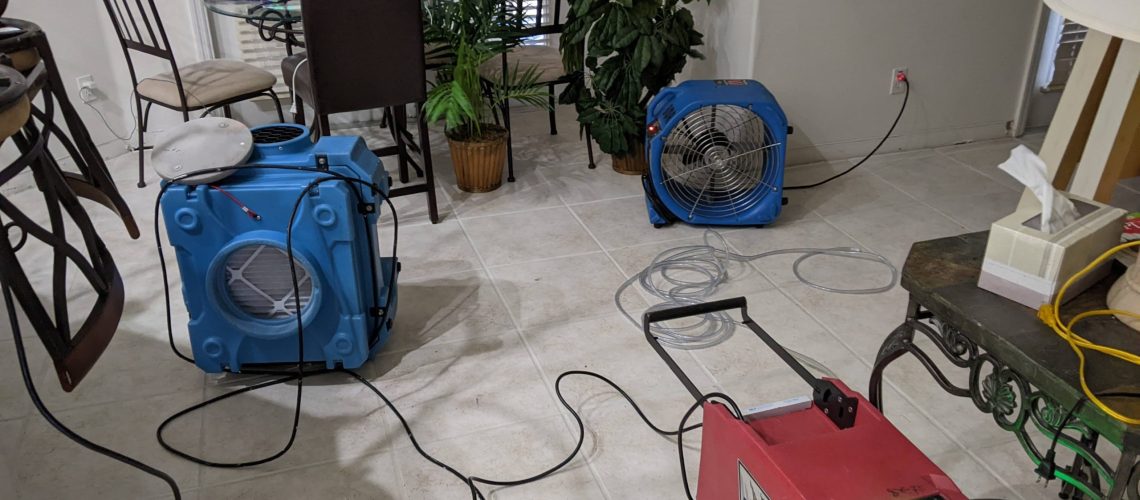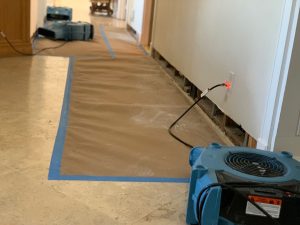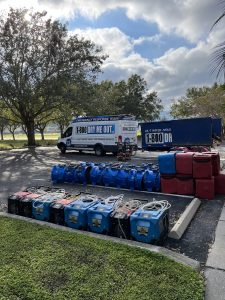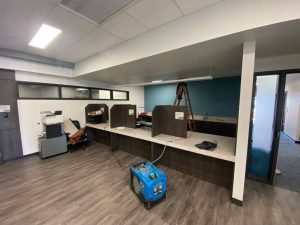When water invades your home or business, the damage can go far beyond what’s visible on the surface. At Dry Me Out, we’ve seen firsthand how even a small leak or minor flooding can create serious problems if not handled quickly and properly. Whether it’s a burst pipe, storm flooding, or a slow roof leak, water damage raises a lot of questions and concerns.
In this guide, we’re breaking down the most common concerns property owners face when dealing with water damage, what to watch out for, and how our restoration team can help you recover fast and fully.
Key Takeaways
- Mold and structural damage are the biggest hidden threats after water exposure.
- The type of water (clean, grey, black) impacts both health risks and cleanup requirements.
- Don’t ignore signs like odors, peeling paint, or warped floors. They often indicate a deeper problem.
- Waiting to address water damage increases costs and health risks.
- Insurance coverage varies, so document everything and act quickly.
- Professional restoration is more thorough and safer than DIY fixes.
- Dry Me Out offers 24/7 emergency service and full support, from cleanup to insurance.
The Hidden Threats Behind Water Damage
Water doesn’t just soak your floors and disappear. It seeps into drywall, insulation, subfloors, and even electrical systems. And once it’s there, it doesn’t just sit quietly. It starts causing trouble almost immediately.
Mold Growth
One of the most common and concerning outcomes of water damage is mold. Mold thrives in moist environments, and once it starts growing, it spreads quickly. In as little as 24 to 48 hours after water exposure, mold can begin forming, especially if the area isn’t properly dried and treated.
Besides the musty smell, mold can lead to serious health issues. People with allergies, asthma, or compromised immune systems are particularly vulnerable. Even if you can’t see the mold, it can still be growing behind walls or under flooring.
Structural Damage
Water is powerful. It may not seem like it at first, but it can wreak havoc on the structural integrity of your property. Over time, prolonged exposure to moisture can:
- Weaken wooden framing and support beams
- Warp floors and walls
- Crack drywall and paint
- Rust or corrode metal fixtures and fasteners
This type of hidden damage is costly to repair and poses safety risks if not identified and handled early on.
The Different Types of Water Damage (And Why They Matter)
Not all water damage is created equal. The source and category of water greatly affect the restoration process and your level of risk.
Category 1: Clean Water
This is the least dangerous type. It typically comes from broken water supply lines, faucet leaks, or rainwater. While it’s not contaminated, clean water can still lead to mold and property damage if left untreated, and it can become contaminated over time.
Category 2: Gray Water
This type of water may contain chemical, biological, or physical contaminants. Examples include dishwasher or washing machine overflows and some sump pump failures. It poses a higher risk and requires careful cleaning and sanitizing.
Category 3: Black Water
This is the most hazardous type of water damage. It includes sewage backups, floodwaters, and water from rivers or streams. Black water contains harmful bacteria, pathogens, and toxins, and requires specialized equipment and PPE for safe cleanup.
Health Concerns You Shouldn’t Ignore
One of the scariest parts of water damage is the health risks. We’ve seen many homeowners underestimate the danger, thinking it’s “just a little water.” But stagnant or contaminated water can quickly lead to health problems like:
- Respiratory issues from mold spores
- Skin irritation or infections from bacteria-laden water
- Illnesses from toxic black water exposure
This is especially true for young children, elderly adults, and those with respiratory conditions like asthma.
Common Signs of Water Damage
Sometimes the damage is obvious, like soaked carpet or visible stains. But often, water damage is sneakier than that. Keep an eye out for these warning signs:
- Musty or damp odors
- Peeling paint or wallpaper
- Bubbling ceilings or warped walls
- Sudden increases in your water bill
- Sagging floors or ceilings
- Visible mold spots
If something feels off, trust your gut. A quick inspection by a professional can save you thousands in long-term damage.
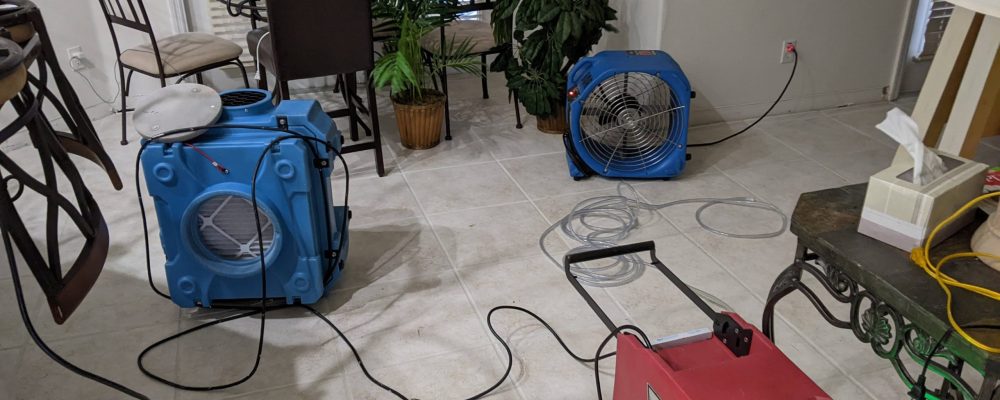
Insurance Worries: What Will They Cover?
Let’s talk about a concern we hear from nearly every client—insurance. Navigating your policy during a water damage crisis can feel overwhelming. Here’s a general breakdown:
- Covered Events: Most standard homeowners insurance policies cover sudden and accidental damage like burst pipes or overflow from appliances.
- Not Covered: Damage from poor maintenance, slow leaks, or flooding from natural disasters usually isn’t covered unless you have a specific flood policy.
- What You Should Do: Document the damage as soon as you notice it. Take photos, save repair receipts, and contact your insurance provider right away.
Dry Me Out works directly with your insurance company to help streamline the claims process and ensure you get the coverage you deserve.
The Cost of Waiting
Here’s a hard truth: the longer you wait, the worse—and more expensive—it gets.
Delaying water damage cleanup even by a day or two can mean the difference between a quick fix and a major reconstruction. Mold sets in. Materials rot. Costs climb. And your frustration grows.
We get it—life is busy, and it’s tempting to put it off or try a DIY fix. But professional restoration services like ours exist for a reason. We have the tools, training, and experience to spot hidden damage, stop mold before it starts, and fully restore your home safely and quickly.
DIY vs. Professional Water Damage Restoration
We’ve had many homeowners tell us, “I cleaned it up with a shop vac and a fan. I think it’s fine now.” Unfortunately, surface-level drying rarely solves the deeper problem.
Here’s the deal:
DIY Methods
- Only address visible water
- Miss moisture trapped in walls or flooring
- Can lead to mold if drying isn’t thorough
- Often void insurance coverage if not properly documented
Professional Restoration
- Industrial-strength dehumidifiers and air movers
- Moisture meters to detect hidden dampness
- Full mold prevention and treatment
- Thorough documentation for insurance claims
Our team at Dry Me Out handles the job from start to finish so you can rest easy knowing your home is safe and sound.
How Dry Me Out Can Help
We’re more than just a cleanup crew. At Dry Me Out, we take a comprehensive approach to water damage recovery. Our process includes:
- Immediate Response: 24/7 emergency services
- Assessment & Inspection: We find the full scope of the damage
- Water Extraction & Drying: Fast, efficient moisture removal
- Mold Prevention & Remediation: Keeping your indoor air clean
- Repair & Restoration: From drywall to flooring, we’ve got it covered
- Insurance Support: We work with your provider, so you don’t have to
Whether you’re dealing with a small leak or a major flood, our goal is to make your space clean, safe, and livable again, with as little stress on you as possible.
Preventing Future Water Damage
Once your property is restored, it’s a good idea to take steps to prevent another disaster down the line. We often recommend:
- Installing water leak detectors in bathrooms, laundry rooms, and basements
- Cleaning out gutters and downspouts regularly
- Having your roof inspected yearly
- Ensuring appliances like water heaters and dishwashers are properly maintained
- Insulating exposed pipes during cold months
Being proactive goes a long way in avoiding future headaches and costly repairs.
Water damage isn’t just a mess, it’s a serious issue that can disrupt your life, threaten your health, and damage your home’s structure. But you don’t have to face it alone. At Dry Me Out, we’ve got the expertise, equipment, and compassion to help you recover fully and confidently.
If you suspect water damage or just want a professional opinion, give us a call. We’re here to help you dry out, clean up, and move on—fast.
Call us today for a prompt response to your emergency.

